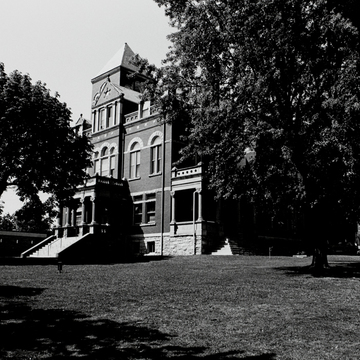This large building of hard-pressed red brick with sandstone trim, the fourth courthouse built on or near this site, visually dominates Fayetteville. The facade is rigidly symmetrical, but a slightly recessed tower with a pyramidal roof rising to its left provides an overall sense of asymmetry. Details are a curious amalgam of Romanesque and classical motifs. Column capitals on the two stone porches border on architectural schizophrenia, and both human and
Although Frank E. Davis, the Baltimore architect who designed the predecessor (1887–1891) courthouse that burned in 1893, was initially given the commission to design its replacement, a competition was held instead. Franzheim and Giesey of Wheeling, who were selected as architects, designed the new structure to be as fireproof as possible. Brick arches support the tile floors, and the stairways are cast iron. Despite many changes to the interior, encaustic tile floors, golden oak woodwork, and tin ceilings remain to give authentic period flavor. Brick additions are properly subservient to the original structure, as is the early-twentieth-century stone jail to the east.

